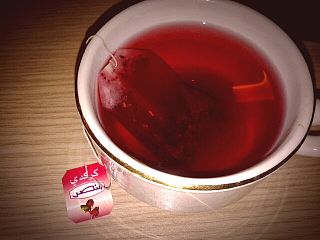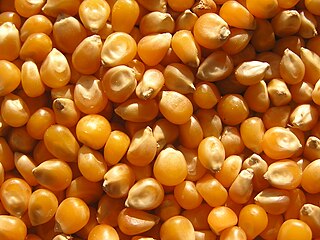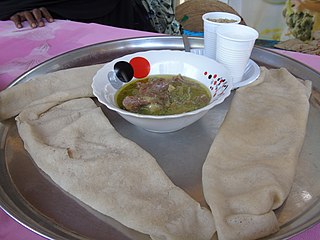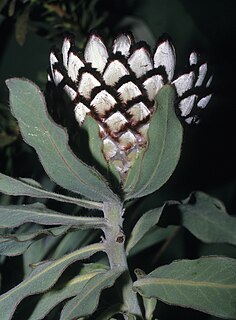
Huntsman spiders, members of the family Sparassidae, are known by this name because of their speed and mode of hunting. They are also called giant crab spiders because of their size and appearance. Larger species sometimes are referred to as wood spiders, because of their preference for woody places. In southern Africa the genus Palystes are known as rain spiders or lizard-eating spiders. Commonly they are confused with baboon spiders from the Mygalomorphae infraorder, which are not closely related.
The influence of the music of West Africa can be found in music elsewhere. Griots, who are wandering musicians, are found throughout the region.

Tomato bredie is a South African stew, referred to in Afrikaans as 'tamatiebredie', normally made with mutton. It is cooked for a very long time, and its seasonings include cinnamon, cardamom, ginger and cloves as well as chilli. It is of Dutch origin. "Bredie" is the Afrikaans word for "stew", but is actually a word of Malaysian origin. This form of cooking was first introduced to the Cape by Malays, who were brought to the colony in most cases as slaves. The word bredie refers to oriental spinach. In tomato bredie tomato is used instead. Pumpkin, green beans and waterblommetjies are also used. This traditional South African dish is commonly eaten around South Africa by both locals and tourists.

Vetkoek, is a traditional South African fried dough bread. The vetkoek forms part of South African culture. It is similar to the Caribbean Johnny cake, the Dutch oliebol, and the Mexican sopaipillas.

A kufi or kufi cap is a brimless, short, and rounded cap worn by men in many populations in North Africa, East Africa, Western Africa and South Asia. It is also worn by men throughout the African diaspora. It is also commonly called a "topi" or "tupi" in the Indian subcontinent.

Hibiscus tea is an herbal tea made as an infusion from crimson or deep magenta-colored calyces (sepals) of the roselle flower. It is consumed both hot and cold. It has a tart, cranberry-like flavor.
Sierra Leonean cuisine consists of the cooking traditions and practices from Sierra Leone. It follows the traditions of other West African cuisines.

Phacochoerus is a genus in the family Suidae, commonly known as warthogs. It is the sole genus of subfamily Phacochoerinae. They are pigs who live in open and semi-open habitats, even in quite arid regions, in sub-Saharan Africa. The two species were formerly considered conspecific under the scientific name Phacochoerus aethiopicus, but today this is limited to the desert warthog, while the best-known and most widespread species, the common warthog is Phacochoerus africanus.
In the English language, negro is a term historically used to denote persons considered to be of Black African heritage. The term can be construed as offensive, inoffensive, or completely neutral, largely depending on the region or country where it is used. It has various equivalents in other languages of Europe.

Beninese cuisine is known in Africa for its exotic ingredients and flavorful dishes. Beninese cuisine involves many fresh meals served with a variety of sauces. Meat is usually quite expensive, and meals are generally light on meat and generous on vegetable fat.

Ivorian cuisine is the traditional cuisine of Côte d'Ivoire, or the Ivory Coast, and is based on tubers, grains, pig, chicken, seafood, fish, fresh fruits, vegetables and spices. It is very similar to that of neighboring countries in West Africa. Common staple foods include grains and tubers. Côte d'Ivoire is one of the largest cocoa producers in the world and also produces palm oil and coffee.

Chadian cuisine is the cooking traditions, practices, foods and dishes associated with the Republic of Chad. Chadians use a medium variety of grains, vegetables, fruits and meats. Commonly consumed grains include millet, sorghum, and rice as staple foods. Commonly eaten vegetables include okra and cassava. A variety of fruits are also eaten. Meats include mutton, chicken, pork, goat, fish, lamb and beef. The day's main meal is typically consumed in the evening on a large communal plate, with men and women usually eating in separate areas. This meal is typically served on the ground upon a mat, with people sitting and eating around it.

Togolese cuisine is the cuisine of the Togolese Republic, a country in Western Africa. Staple foods in Togolese cuisine include maize, rice, millet, cassava, yam, plantain and beans. Maize is the most commonly consumed food in the Togolese Republic. Fish is a significant source of protein. People in Togo tend to eat at home, but there are also restaurants and food stalls.

Diastella fraterna, commonly known as the palmiet silkypuff, is a plant of the family Proteaceae native to South Africa.

Protea denticulata, commonly known as the tooth-leaf sugarbush, is a shrub of the family Proteaceae native to South Africa.

Protea longifolia, commonly known as the long-leaf sugarbush, is a shrub of the family Proteaceae that is native to South Africa.

Protea grandiceps, commonly known as rooisuikerbos, suikerbos or red sugarbush, is a flowering shrub that belongs to the Protea genus and is native to parts south western parts of South Africa. The shrub was listed as an+ near threatened species in 2006 according to the South African National Biodiversity Institute.

Protea holosericea, commonly known as sawtooth sugar bush or sawedge sugarbush, is a flowering shrub belonging to the Protea genus. The plant is endemic to South Africa and is found in the Sawedge peak on the Kwadousberg Mountains on the Western Cape.














